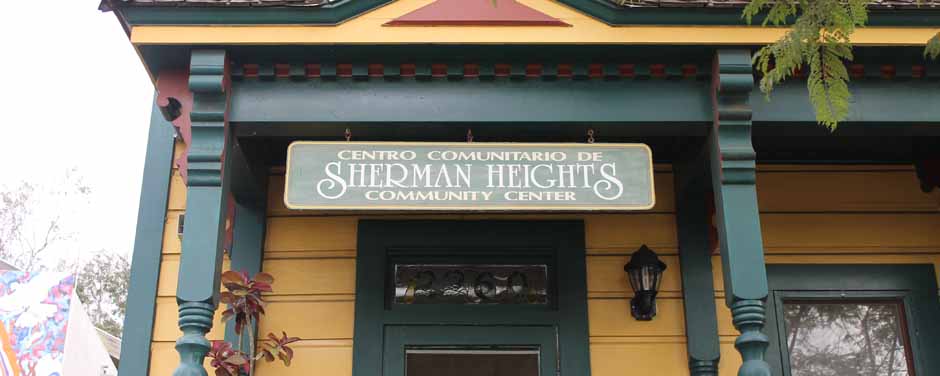
The communities of Sherman Heights, Grant Hill and Stockton are connected to Logan Heights and Memorial by the Commercial Street/Imperial Avenue Corridor. These communities are referred to as Historic Barrio District. All of these communities are included in the large Southeastern San Diego Community Plan, adopted in 1987.
Individual neighborhoods have created various official revitalization plans and community visions:
Sherman Heights Revitalization Action Plan - 1995
Grant Hill Revitalization Action Program - 1998
Greater Logan Heights Neighborhoods First Quality of Life Plan – 2008/09
The Planning Department of the City of San Diego is currently coordinating development of a Commercial/Imperial Corridor Master Plan. EHC is working primarily with the Historic Barrio District Community Development Corporation (that includes the neighborhoods of Sherman Heights, Grant Hill, Stockton, Logan Heights and Memorial) to influence this vision of the Corridor as a vibrant community link.
Merchants located on Imperial Avenue have long complained that the area is "red lined" making it difficult to get loans and insurance. Insurance rates are 5-10 times higher than other parts of the city.
EHC's Associate Director Georgette Gomez is Vice President of the Historic Barrio District Community Development Corporation, chairing the community and economic development committee.
According to the Industrial Element of the Community Plan:
Rezonings in the 1970s, aimed at upgrading uses and providing industrial sites have not resulted in a change of uses. "Strip" industrial zoning in the western portion of the community has resulted in access problems and conflicts with adjoining uses. These strips are located along Imperial Avenue between Interstate 5 and 22nd Street, and along Commercial Street between Interstate 5 and Bancroft Street. In these strips, there is a mixture of residential and industrial uses which is permitted under the current industrial zoning. These areas were chosen for industrial development in part on the basis of the existence of railroad tracks within Commercial Street; however little use has been made of this advantage. The expected development has not materialized since the adoption of the community plan in 1969, as residences have not given way to industrial development. The industrial activities present in these areas are typified by warehousing, distribution and automobile dismantling. These uses hire few people, are environmentally incompatible with adjacent development and are aesthetically unpleasant. (emphasis added)
Atlas Chemical, Inc. on Commercial Street is one of these incompatible business. It stores and distributes a wide variety of toxic and hazardous materials within feet of homes.
Unfortunately, the draft Master Plan calls for the continuation of Commercial Street for light industrial, only gradually transitioning to commercial, residential, community serving and cultural uses.

